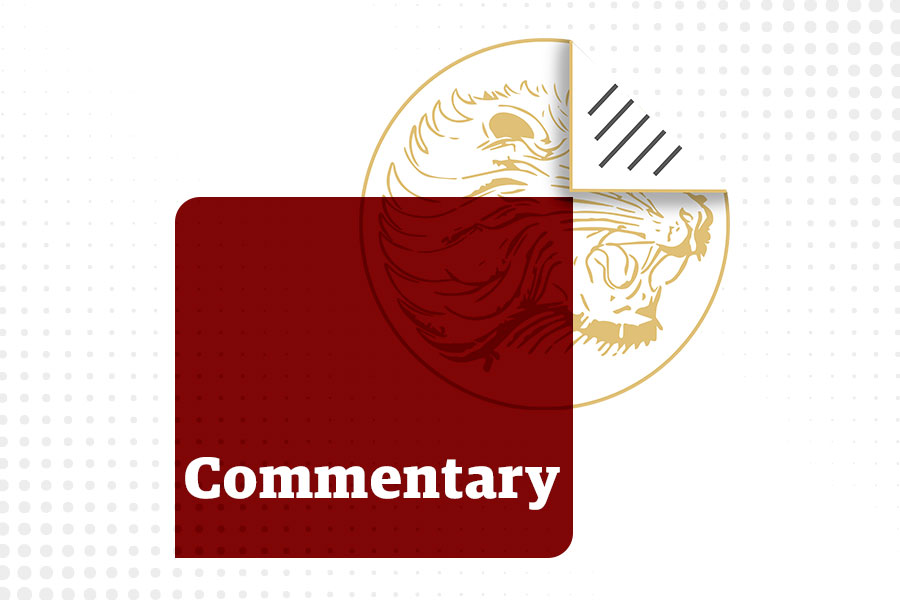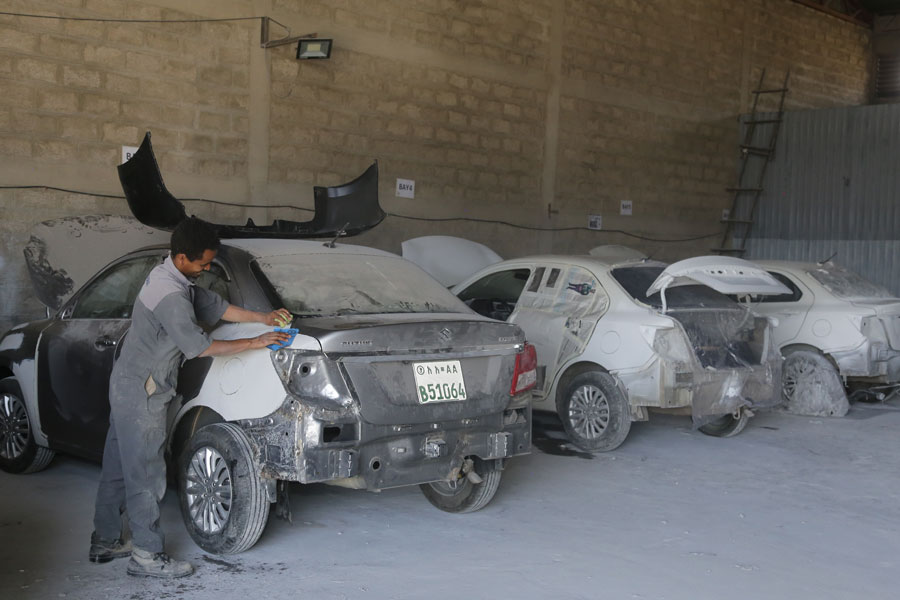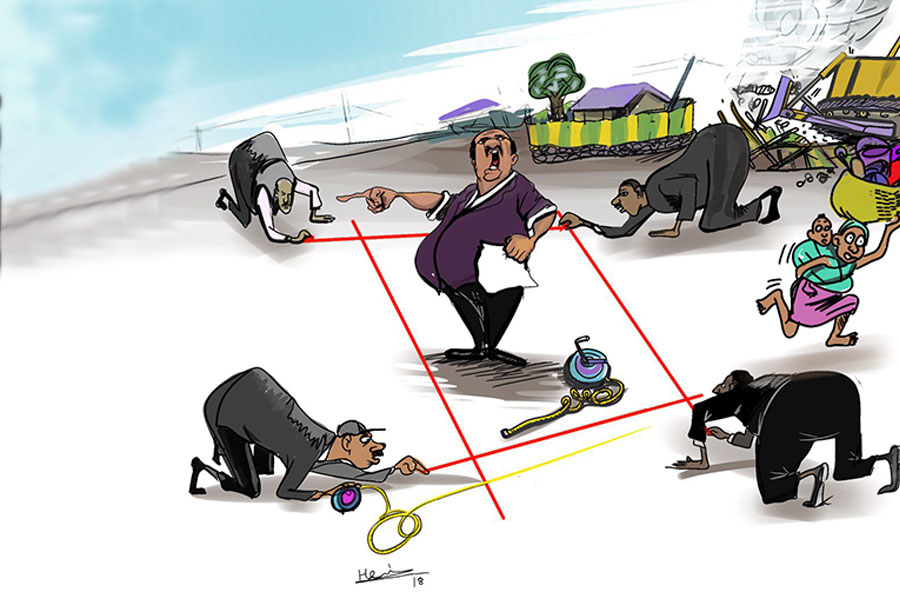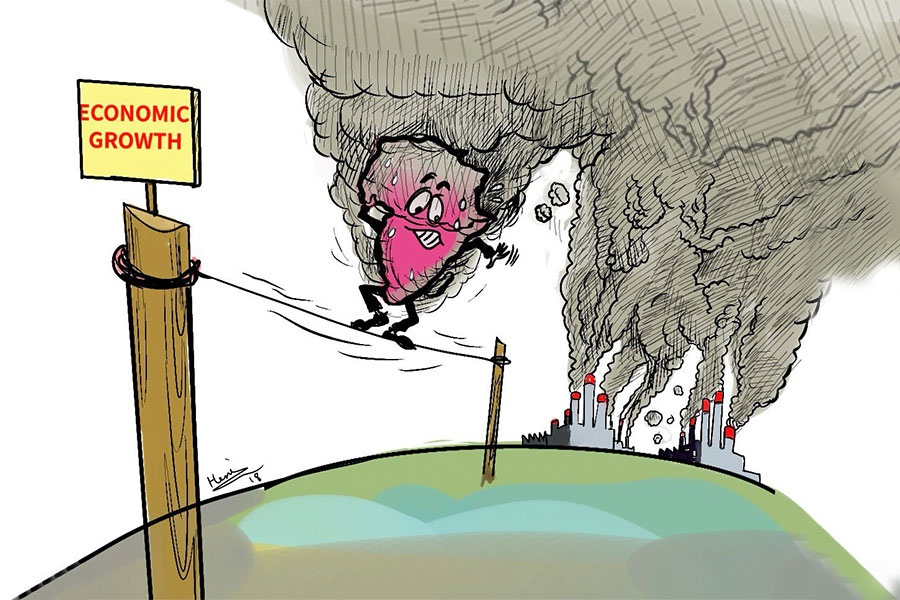
Feb 13 , 2024
By Mikael Alemu
Sitting in Khaldi's Coffee on Airport Road, onlookers can witness an emerging trend of streets scuttling with more electric vehicles (EVs) than one might have encountered in a European city a decade ago. The scene is a story of the rapid development of economies and societies, with Ethiopia embracing electric transportation at an impressive pace.
Countries around the world are increasingly adopting electric vehicles to address climate change and reduce pollution. Western nations, in particular, have set ambitious targets to phase out new internal combustion engine vehicle sales in the coming decades. Norway and the Netherlands, for instance, aim to ban new ICE car sales starting in 2025, while the United Kingdom (UK) plans to allow only electric car sales from 2030, later adjusting this target to 2035.
The European Union has its sights set on an "electric cars only" policy by 2035, and California has outlined targets for zero emissions vehicles (ZEVs) reaching 35pc by 2026 and 100pc by the year 2035.
These commitments reflect the countries' strong economic positions, with GDP per capita figures significantly higher. Norway boasts a GDP per capita (PPP) of 87,495 dollars, and California, if considered independently, would rank at around 80,870 dollars. They also benefit from stringent environmental protections and clean air policies. In contrast, Ethiopia's economic reality paints a different picture. With a GDP per capita (PPP) of 2,922 dollars in 2021, its income and consumption levels are less than five percent of those in the countries mentioned here.
The major sources of air pollution in our cities include wood burning for cooking and emissions from trucks and buses rather than passenger cars.
Given these disparities, Ethiopia's strategy for electric vehicle policy should initially focus on segments that are currently viable, such as urban rickshaws, while gradually building the infrastructure and incentives necessary for the wider adoption of electric passenger vehicles. This approach should align with projected economic growth and the expected increase in GDP per capita to nearly 5,000 dollars by the end of the decade.
Ethiopia's electricity generation capacity, currently at 5,000MW for a population of over 100 million, sharply contrasts with that of countries like the United States, which has 1.3 million megawatts, and the Netherlands, which has 475,000MW. This calls for realistic short-term priorities, with a focus on electrifying three-wheelers, or "bajajes," which are a popular form of urban transportation and contribute significantly to air pollution. The transition to electric bajajs, supported by a network of solar-powered charging stations, could serve as a cost-effective and environmentally friendly solution.
The initiative, coupled with the promotion of electric passenger cars in major cities like Addis Abeba, could be further facilitated through creative financing programs, tax incentives, and the development of public charging infrastructure.
Ethiopia could aim to launch an "Electric Transport Strategy" by 2035, with firm targets set for 2045, including the ban on new gasoline-powered auto rickshaws and small passenger cars in cities. Supporting policies would need to encompass tax credits, import duty exemptions, low-interest loans, and utility programs to make electric vehicles more accessible and affordable. Designating "EV zones" in city centres and ramping up renewable energy capacity are additional measures that would complement Ethiopia's adoption of electric transport.
By leapfrogging directly to electric vehicles, Ethiopia can position itself as a leader in sustainable transportation, driving innovation, enhancing energy independence, and contributing to a cleaner, healthier environment. In 25 years, the hope is that the same Kaldi’s Coffee on Bole Road will overlook a landscape where electric vehicles dominate the streets, marking a significant leap forward in Ethiopia's journey towards sustainable development and climate leadership.
PUBLISHED ON
Feb 13,2024 [ VOL
24 , NO
1241]


Commentaries | Mar 26,2022

Radar | Jun 30,2024

Radar | Oct 19,2019

Editorial | Oct 28,2023

News Analysis | Mar 09,2024

Commentaries | Oct 02,2021

Editorial | Jan 27,2024

In-Picture | Sep 21,2025

Radar | Jan 05,2019

Radar | Jul 01,2023

Photo Gallery | 171509 Views | May 06,2019

Photo Gallery | 161750 Views | Apr 26,2019

Photo Gallery | 151479 Views | Oct 06,2021

My Opinion | 136302 Views | Aug 14,2021





Dec 22 , 2024 . By TIZITA SHEWAFERAW
Charged with transforming colossal state-owned enterprises into modern and competitiv...

Aug 18 , 2024 . By AKSAH ITALO
Although predictable Yonas Zerihun's job in the ride-hailing service is not immune to...

Jul 28 , 2024 . By TIZITA SHEWAFERAW
Unhabitual, perhaps too many, Samuel Gebreyohannes, 38, used to occasionally enjoy a couple of beers at breakfast. However, he recently swit...

Jul 13 , 2024 . By AKSAH ITALO
Investors who rely on tractors, trucks, and field vehicles for commuting, transporting commodities, and f...

Oct 4 , 2025
Eyob Tekalegn (PhD) had been in the Governor's chair for only weeks when, on Septembe...

Sep 27 , 2025
Four years into an experiment with “shock therapy” in education, the national moo...

Sep 20 , 2025
Getachew Reda's return to the national stage was always going to stir attention. Once...

Sep 13 , 2025
At its launch in Nairobi two years ago, the Africa Climate Summit was billed as the f...

Oct 5 , 2025 . By NAHOM AYELE
In Meqelle, a name long associated with industrial grit and regional pride is undergo...

Oct 5 , 2025 . By BEZAWIT HULUAGER
The federal government is set to roll out a new "motor vehicle circulation tax" in th...

Oct 5 , 2025 . By NAHOM AYELE
The Bank of Abyssinia is wrestling with the loss of a prime plot of land once leased...

Oct 5 , 2025 . By BEZAWIT HULUAGER
The Customs Commission has introduced new tariffs on a wide range of imported goods i...